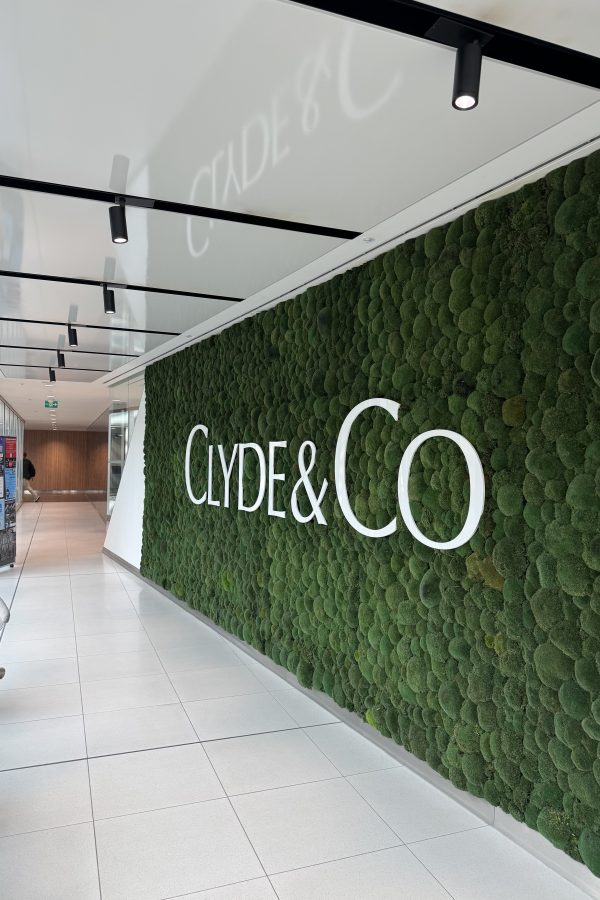In May 2020, just two months into the pandemic, consulting firm McKinsey was already reporting on the necessity for organisations to rethink the way they looked at skills and managed talent.
It urged companies to “craft a talent strategy that develops employees’ critical, digital and cognitive capabilities, their social and emotional skills, and their adaptability and resilience”.
Organisations needed to figure out how they could help workers adapt to rapidly changing conditions and match workers to new roles and activities – all within the context of remote and hybrid working. And with that, how they measured employees’ contributions.
Many employers in the legal and professional services sector have long-embedded approaches to how they map and measure talent, whether that’s pathways to partnership or how they develop high-potential employees into future leaders. But do these still stand up in the post-pandemic world?
Careers after Covid
John McLaughlin, chief commercial officer for EMEA at consulting firm AON, believes that the pandemic has led many employers to reappraise what matters to their workforce, and how that relates to their career ambitions.
“If you make career progression about ‘making partner’ it can be quite black and white, and you end up losing great talent as people want to structure their life around something else other than work,” he says.
More firms are creating value propositions for people who don’t want a linear career towards partnership, who can “still be valuable contributors without bringing in revenue”. He describes this as a ‘career climbing wall’ where employees can choose whether to move sideways, upwards, or even get off for a period while they focus on other things.
He adds: “Pre-pandemic people often defined themselves by work or family, and this was often a male-female split. But the narrative has changed quite significantly, and work is not the number one thing for many anymore.”
“As employers we need to fit around these preferences if we want to retain these people, and value these things accordingly. Employees will look to employers that offer career flexibility.”
DAC Beachcroft’s post-Covid working strategy is known as Flex Forward, and the focus is very much on measuring outputs rather than how much time someone spends at their home or office desk.
“The idea is that you work your contractual hours (or more if you need to) but at a schedule that suits you, as long as you’re collaborating with your team and delivering outputs for your clients and your role,” explains HR business partner Tess Harris.
“One of the challenges during Covid and in the future is less visibility. Lawyers record hours, so that’s an objective measure, but that doesn’t capture additional things such as team management and business development.”
The firm has been running various learning sessions with managers which include upskilling them on judging outputs and they are planning a lot more work in this area, she adds. “For some it might be contact reports from clients, others might be team feedback. It means we can form a reliable picture of people that are delivering right across the business.”
Performance reviews are annual in the LLP arm of the business and quarterly in the Claims Solutions Group, which provides claims services and tends to operate at higher volumes. Stakeholder feedback is encouraged to feed into the performance management process, and one of the HR team’s priorities is to improve the level and quality of feedback given in between formal reviews.
Evolving careers
John Rice, director at talent and engagement software company Bowland Solutions, says that law firms have traditionally taken a measured approach to managing and mapping talent, but this is becoming more agile.
“There has been a perception of there being a ladder, especially on the solicitor track. But this is changing. There is a recognition now that this is just one of many paths available to people,” he explains. “Firms are also evolving their talent management because there are a lot of professional and business services staff that sit outside the fee-earning populations, and they need capability for the future too.”
An increasing focus on diversity and inclusion is accelerating this, he adds. “Firms realise that you need to accommodate people at different life stages, living different types of lives. During the pandemic the challenge has been to retain fairness and equity without visibility – those conversations between partners or line managers and their teams have been impacted by working remotely.”
Recognising people’s achievements and giving them an idea of their potential progress in the organisation has to be more deliberate, he argues. “Feedback requires more effort and structure, such as placing an emphasis on debriefing work as it comes to a conclusion. What has the person done well, what could they do going forward? That gives them a sense of their performance and potential. “It means people thinking in a more holistic way, looking through a different lens with a mindset change that not everyone wants to be a partner.”
Mixing it up
For organisations that are used to more formal and structured approaches such as high-potential programmes and nine-box grids, introducing more informal talent mechanisms can seem counterintuitive. But it’s not a case of one or the other, according to McLaughlin.
“If we take the concept of high potentials in the past, we’ve traditionally based this on nominations and ratings from managers,” he says. “From a diversity standpoint does this lead to an optimum outcome if those ‘water-cooler’ conversations play such a big part in how you’re viewed?” Covid and remote working have offered managers the opportunity to “change this up”, he adds.
“We can broaden the definition of potential, for example doing away with the assumption that leadership comes with people management responsibility. We can use assessments and psychometrics and include things on top of manager ratings so we have a whole range of data points. If you have an intentional view of promoting certain groups for D&I purposes, you can introduce something around that. It’s rethinking the process to be more holistic.”
DAC Beachcroft is boosting diversity through promoting non-traditional routes to qualification, meaning people with other types of business experience can enjoy a legal career and fuel a culture that is “receptive to change”, according to Harris. There is also a career returners programme that encourages parents who may have dropped out of law to re-enter the profession, perhaps in a different area of specialism.
A portfolio career is positively encouraged at the firm, she adds. “We support opportunities for lateral moves. One of our former senior associates opted to become a practice manager who manages the financial, operations and strategic side of our Insurance and Health teams, following the success of which she has recently been promoted to Practice Director.”
Watch out for presence power
Using a combination of talent measurement metrics will be crucial as firms move to more hybrid models of working, too. “Structured assessments are often online so work better in a hybrid or remote environment as they level the playing field for those who aren’t great at networking,” adds McLaughlin.
Workplace psychologists have already warned of the potential risks associated with presence or proximity bias, where managers pick people for projects or roles based on the fact they can ‘see’ them being productive in the office, and talent management approaches need to mitigate this.
In its recent Embedding new ways of working post-pandemic report, the CIPD cautions that colleagues attending key meetings remotely while others are in the office could lead to ‘presence disparity’ so communications and feedback should be as inclusive as possible.
You must ensure that visibility of people in the office doesn’t mean they are unfairly favoured for work, projects or promotion to those less visible when working from home” adds Rice of Bowland Solutions.
This also requires firms’ talent management strategies to be embedded across the business, rather than ‘owned’ by HR, says Rice. “Law firms are often a collection of small businesses in the form of departments or practice areas, and the challenge is for partners leading those departments, to recognise what the aim of that business is, and to create a talent plan to support that. There will be a whole range of people critical to that success, and not just lawyers.”
Moving forward, this approach becomes more collaborative rather than being imposed from the top. “Old terminology focuses on workforce planning, career paths and the like, but now it’s more like a talent marketplace, where partners and line managers should have a clear understanding of what they need, and what talent they have in their teams, whilst employees have a clear understanding of what their strengths are and where they can have maximum impact; feedback and conversation between both parties will be fundamental to that,” he concludes.










